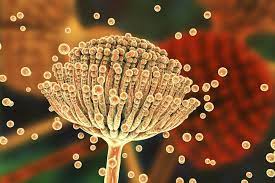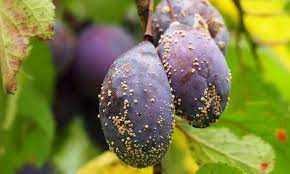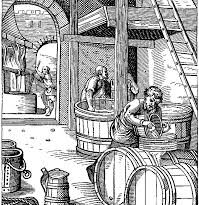The Concept, Types and Effects of Mycotoxins in the Environment
The presence of mycotoxins in food stuffs has great significance in the health of humans and livestock. Mycotoxins are associated with diseased or deteriorating crops. At times, the presence of the fungi that leads to the production of mycotoxins can easily be visible and some other times they are not visible.
Fungi are a group of eukaryotic organisms that can be microscopic in nature though some can be seen as macroscopic, e.g. Mushrooms and Rhizopus. Filamentous fungi produce secondary metabolites known as mycotoxins.
These mycotoxins are poisonous chemical compounds. There are many such compounds in the environment but only a few of them are often found in food materials, grains and seeds.
Read Also : Factors Influencing Soil Moisture
The Concept of Mycotoxins
Mycotoxins are toxic compounds that are naturally produced by certain types of moulds (fungi). Moulds that can produce mycotoxins grow on numerous foodstuffs such as cereals, dried fruits, nuts and spices.
Mould growth can occur either before harvest or after harvest, during storage, on/in the food itself often under warm, damp and humid conditions. Most mycotoxins are chemically stable and survive food processing.
Several hundred different mycotoxins have been identified, but the most commonly observed mycotoxins that present a concern to human health and livestock include aflatoxins, ochratoxin A, patulin, fumonisins, zearalenone and nivalenol/deoxynivalenol.
Exposure to mycotoxins can happen either directly by eating infected food or indirectly from animals that are fed contaminated feed, in particular from milk (WHO, 2018). A scientific expert committee jointly convened by WHO and the Food and Agriculture Organization of the United Nations (FAO) – called JECFA is the international body responsible for evaluating the health risk from natural toxins including mycotoxins.
International standards and codes of practice to limit exposure to mycotoxins from certain foods are established by the Codex Alimentarius Commission based on JECFA assessments (WHO, 2018).
Types of Mycotoxins
According to Bennet and Klich (2003), some of the major types of mycotoxins are as follows:
1. Aflatoxins
The aflatoxins were isolated and characterized after the death of more than 100,000 turkey poults (turkey X disease) was traced to the consumption of a mold-contaminated peanut meal.

The four major aflatoxins are called B1, B2, G1, and G2 based on their fluorescence under UV light (blue or green) and relative chromatographic mobility during thin-layer chromatography. Aflatoxin B1 is the most potent natural carcinogen known and is usually the major aflatoxin produced by toxigenic strains.
2. Citrinin
Citrinin was first isolated from Penicillium citrinum prior to World War II subsequently, it was identified in over a dozen species of Penicillium and several species of Aspergillus (e.g., Aspergillus terreus and Aspergillus niveus), including certain strains of Penicillium camemberti (used to produce cheese) and Aspergillus oryzae (used to produce sake, miso, and soy sauce.)
More recently, citrinin has also been isolated from Monascusruber and Monascuspurpureus, industrial species used to produce red pigments.
3. Ergot Alkaloids
The ergot alkaloids are among the most fascinating of fungal metabolites. They are classified as indole alkaloids and are derived from a tetracyclic ergoline ring system.
Lysergic acid, a structure common to all ergot alkaloids, was first isolated in 1934. The clavines have ergoline as a basic structure but lack peptide components; the lysergic acid alkaloids include ergotamine and lysergic acid amide (ergine).
4. Fumonisins
Fumonisins were first described and characterized in 1988.The most abundantly produced member of the family is fumonisin B1. They are thought to be synthesized by condensation of the amino acid alanine into an acetate-derived precursor.
Fumonisins are produced by a number of Fusarium species, notably Fusarium verticillioides (formerly Fusarium moniliforme = Gibberella fujikuroi), Fusarium proliferatum, and Fusarium nygamai, as well as Alternaria alternate.
5. Ochratoxin
Ochratoxin A was discovered as a metabolite of Aspergillusochraceus in 1965 during a large screen of fungal metabolites that was designed specifically to identify new mycotoxins.
Shortly thereafter, it was isolated from a commercial corn sample in the United States and recognized as a potent nephrotoxin. Members of the ochratoxin family have been found as metabolites of many different species of Aspergillus,
6. Patulin
Patulin, 4-hydroxy-4H-furo [3,2c] pyran-2(6H)-one, is produced by many different molds but was first isolated as an antimicrobial active principle during the 1940s from Penicillium patulum (later called Penicilliumurticae, now Penicillium griseofulvum).
The same metabolite was also isolated from other species and given the names clavacin, claviformin, expansin, mycoin c, and penicidin.
7. Trichothecenes
The trichothecenes constitute a family of more than sixty sesquiterpenoid metabolites produced by a number of fungal genera, including Fusarium, Myrothecium, Phomopsis,Stachybotrys, Trichoderma, Trichothecium, and others.
The term trichothecene is derived from trichothecin, which was the one of the first members of the family identified. All trichothecenes contain a common 12,13-epoxytrichothene skeleton and an olefinic bond with various side chain substitutions.
They are commonly found as food and feed contaminants, and consumption of these mycotoxins can result in alimentary hemorrhage and vomiting; direct contact causes dermatitis.
8. Zearalenone
Zearalenone (6-[10-hydroxy-6-oxo-trans-1-undecenyl]-B-resorcyclic acid lactone), a secondary metabolite from Fusariumgraminearum (teleomorph Gibberella zeae) was given the trivial name zearalenone as a combination of G. zeae, resorcylic acid lactone, -ene (for the presence of the C-1′ to C-2 double bond), and -one, for the C-6′ ketone.
Almost simultaneously, a second group isolated, crystallized, and studied the metabolic properties of the same compound and named it F-2. Much of the early literature uses zearalenone and F-2 as synonyms; the family of analogues is known as zearalenones and F-2 toxins, respectively.
Prevention and Control of Mycotoxins in Stored Grains and Seeds
The toxicity of Mycotoxins to man and animals can be prevented or controlled using the following methods.
Dry the grain: Proper drying of the grains prevents the growth of fungi on the food stuff there preventing the production of mycotoxins. The critical water content for safe storage corresponds to a water activity (aw) of about 0.7.
Maintenance of foods below 0.7 aw is an effective technique used for controlling of mycotoxins in stored food.
Avoid grain damage: Grain damage creates opportunity for the fungi to penetrate the grains and start growing, so avoiding damage keeps the fungi away. Most of the time, the damage is caused by insects. So keeping the insects away especially before harvest will help.
Proper storage conditions: A good storage condition will be helpful in controlling the growth of fungi. Fungi grow if the humidity is high.
Detectingmycotoxins:Monitoring the presence of mycotoxins will help in controlling mycotoxins.
In summary, the presence of mycotoxins in food stuffs and grains has serious health impact on both human beings and animals. It also has serious economic implication on any nation if its farm produce contains mycotoxins. In fact it is one of the reasons if not the major reason why some of the exportation of groundnuts in the sixties collapsed.
Read Also : The Concept of Animal Production on Agriculture




